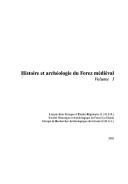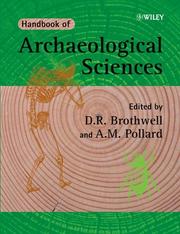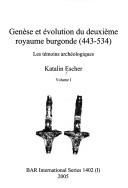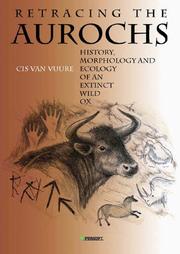| Listing 1 - 10 of 220 | << page >> |
Sort by
|
Book

ISSN: 12856371 ISBN: 2907303872 9782907303873 Year: 2005 Volume: 14 Publisher: Montagnac: Mergoil,
Abstract | Keywords | Export | Availability | Bookmark
 Loading...
Loading...Choose an application
- Reference Manager
- EndNote
- RefWorks (Direct export to RefWorks)
Archaeology --- Archéologie --- Archéologie
Book
Year: 2005 Publisher: Pula : Arheoloski muzej Istre,
Abstract | Keywords | Export | Availability | Bookmark
 Loading...
Loading...Choose an application
- Reference Manager
- EndNote
- RefWorks (Direct export to RefWorks)
Book
ISBN: 9536153351 Year: 2005 Publisher: Pula : Arheolos̆ki muzej Istre,
Abstract | Keywords | Export | Availability | Bookmark
 Loading...
Loading...Choose an application
- Reference Manager
- EndNote
- RefWorks (Direct export to RefWorks)
Fouilles (archéologie) --- Pula (slovénie) --- Expositions

Abstract | Keywords | Export | Availability | Bookmark
 Loading...
Loading...Choose an application
- Reference Manager
- EndNote
- RefWorks (Direct export to RefWorks)
Archaeology, Medieval --- Archaeology --- Archéologie médiévale --- Archéologie --- History. --- Histoire --- Forez (France) --- History
Book
ISBN: 9782952077330 2952077339 Year: 2005 Publisher: [S.l.] [éditeur inconnu]
Abstract | Keywords | Export | Availability | Bookmark
 Loading...
Loading...Choose an application
- Reference Manager
- EndNote
- RefWorks (Direct export to RefWorks)
Fibulas (Jewelry) --- Fibules (Archéologie) --- Catalogs --- Catalogues --- Fibules (Archéologie)

ISBN: 9780470014769 0470014768 Year: 2005 Publisher: Chichester ; New York : J. Wiley,
Abstract | Keywords | Export | Availability | Bookmark
 Loading...
Loading...Choose an application
- Reference Manager
- EndNote
- RefWorks (Direct export to RefWorks)
"The Handbook of Archaeological Sciences is intended to bring together a substantial overview of the sciences in archaeology in one complete volume. The book is organised under eight broad headings: dating, quaternary palaeoenvironments, human palaeobiology, developments in biomolecular archaeology, resource exploitation, archaeological prospection, conservation science in the archaeological context and statistical and computer applications. The contributors, who are all well-known in their own areas of expertise, bring together in each chapter the basic science and the relevance of this science to the overall goal of archaeology - understanding humans in the past."--pub. desc.
Archaeology --- Archéologie --- Methodology. --- Méthodologie --- Methodology --- Archaeology - Methodology
Book
ISBN: 8493152366 Year: 2005 Volume: 6 Publisher: [s.l.] : Fundacion Miguel de Barandiaran Fundazioa ;
Abstract | Keywords | Export | Availability | Bookmark
 Loading...
Loading...Choose an application
- Reference Manager
- EndNote
- RefWorks (Direct export to RefWorks)
Excavations (Archaeology) --- Fouilles (Archéologie) --- Barandarian, José Miguel de, --- Diaries
Book
ISBN: 389646423X Year: 2005 Volume: Bd. 23 Bd. 14 Publisher: Rahden/Westf. : M. Leidorf,
Abstract | Keywords | Export | Availability | Bookmark
 Loading...
Loading...Choose an application
- Reference Manager
- EndNote
- RefWorks (Direct export to RefWorks)
Excavations (Archaeology) --- Fouilles (Archéologie) --- Europe --- Antiquities. --- Antiquités

ISBN: 1841718416 1841718424 1841718432 Year: 2005 Volume: 1402 (I-II) Publisher: Oxford : Archaeopress,
Abstract | Keywords | Export | Availability | Bookmark
 Loading...
Loading...Choose an application
- Reference Manager
- EndNote
- RefWorks (Direct export to RefWorks)
Burgundians --- Archaeology, Medieval --- Excavations (Archaeology) --- Burgondes --- Archéologie médiévale --- Fouilles (Archéologie) --- Archéologie médiévale --- Fouilles (Archéologie)

ISBN: 9546422355 9789546422354 Year: 2005 Publisher: Sofia : Pensoft,
Abstract | Keywords | Export | Availability | Bookmark
 Loading...
Loading...Choose an application
- Reference Manager
- EndNote
- RefWorks (Direct export to RefWorks)
This book tells the comprehensive story of the extinct aurochs (Bos primigenius), the wild ancestor of our domestic cattle, and of what is still left of it. Not only until its extinction in 1627, the aurochs, because of its appearance and nature, had left a deep impression on people, but also afterwards this bovine species, due to scanty information and questionable interpretations, has been subject to discussion and mystification. In spite of a growing amount of individual scientific studies, no exhaustive overview on this subject has ever been made. After many years of research at Wageningen University, the existing information as well as numerous new or unused data from the fields of archaeozoology, history, philology, ecology and palaeoecology have been brought together by the author to build up a complete picture of the physical appearance, the way of life and the environment of the aurochs. Directly related to the ecology of the aurochs is the ongoing discussion concerning the supposed impact large herbivores render on forest structure, as well as on the appearance of the natural landscapes they live in. Here, too, existing and new surprising data from various fields of science are compiled to elucidate this problem. In addition, due attention is paid to the origin, description and evaluation of the so-called bred-back aurochs (Heck cattle), used in several places for educational and nature conservation purposes. Only now can Heck cattle be properly compared with the original aurochs prototype. The book is addressed to specialists in mammalogy (interested in the archaeology, ecology, morphology and history of mammals), palaeoecology (because of the herbivore-impact debate concerning the former natural landscape), forest ecology and European nature conservation, to cattle breeders and other cattle lovers.
Paleontology --- Paleoecology --- Social archaeology --- Bos --- Landscape archaeology --- Paléontologie --- Paléoécologie --- Archéologie sociale --- Archéologie du paysage
| Listing 1 - 10 of 220 | << page >> |
Sort by
|

 Search
Search Feedback
Feedback About UniCat
About UniCat  Help
Help News
News